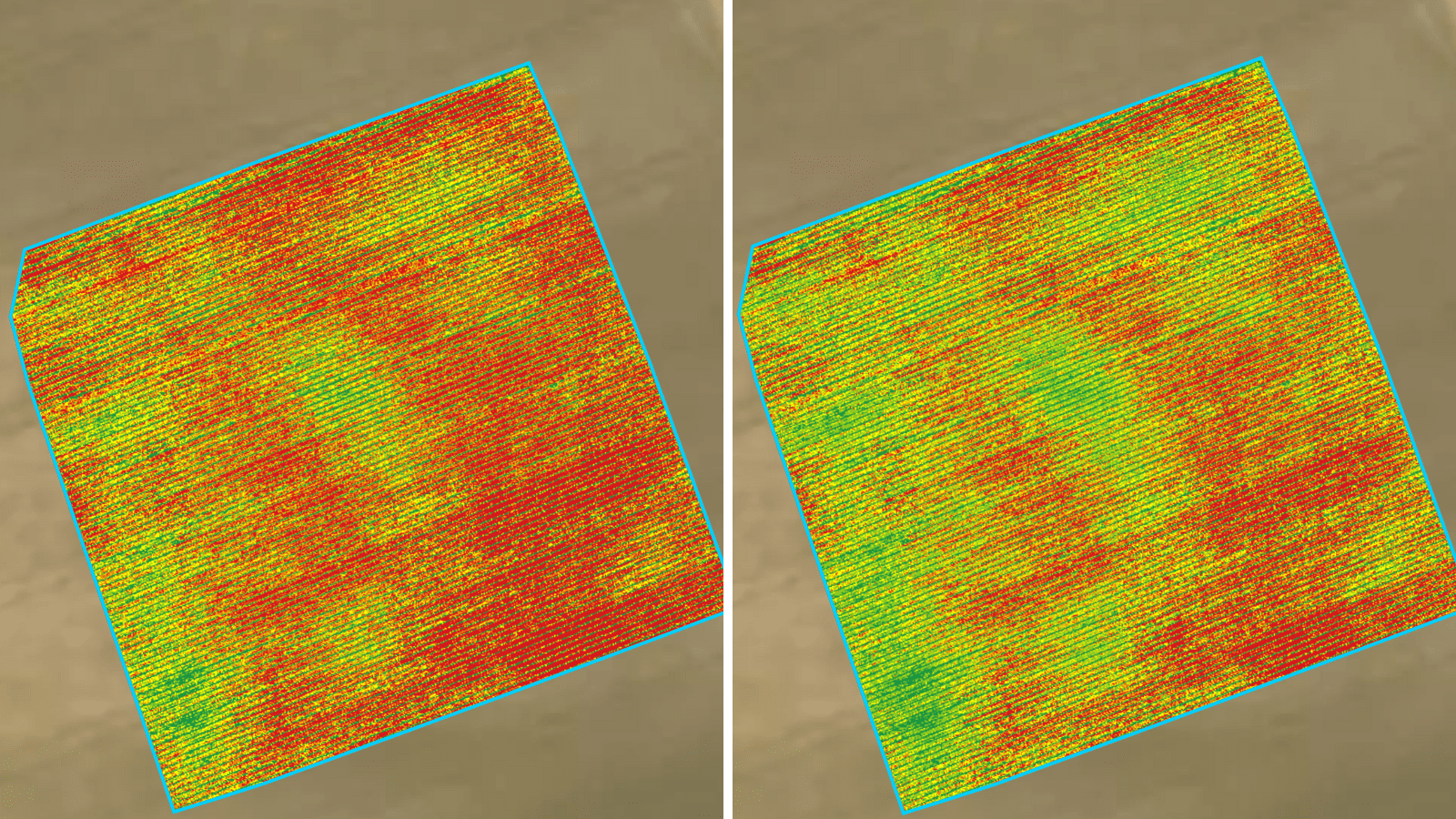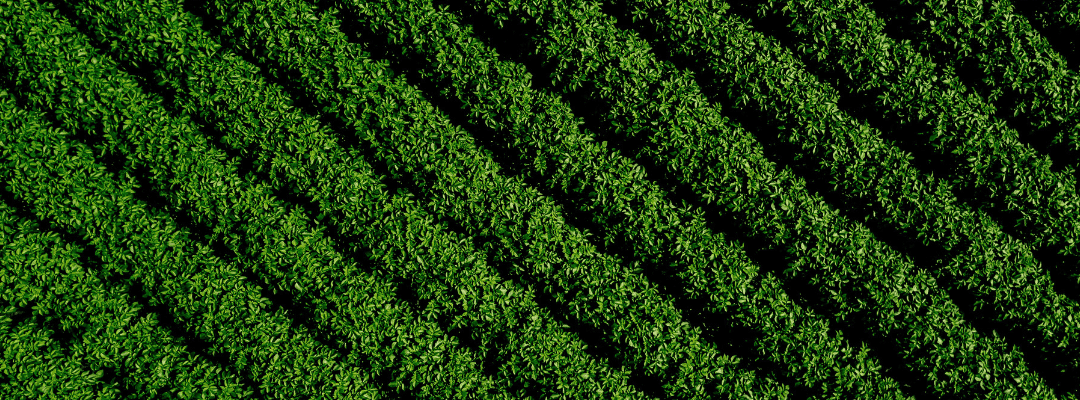We often hear people say, “there’s more than meets the eye,” in a quite expansive variety of situations throughout life. Well, it turns out that this saying can also be applied to agriculture. When capturing imagery, it can offer a different perspective by giving us a different angle or clearer picture, but there are often other layers that tell a more in-depth story of what you are seeing.
Vegetative indices have taken aerial imagery to the next level by picking up what cannot be seen within the range of human vision. One of the most popular indices used in agriculture is the red-edge chlorophyll index. The red-edge band is used to retrieve the chlorophyll content of plants which would be otherwise difficult to measure without multispectral imagery.
Chlorophyll is one of the most significant indicators of a plant’s health and status. Using multispectral bands helps to truly uncover more. By accurately monitoring a plant’s chlorophyll throughout the season, you are able to get a better indication of performance and inform necessary decisions.
How Is Red-Edge Chlorophyll Index Captured?
By leveraging sensors engineered to capture multispectral data, you can effectively and efficiently monitor chlorophyll with indices like red-edge. Red-edge chlorophyll index (or CIRE) is captured through multispectral sensors that are able to use these bands to gain deeper insights into crop health and performance.
Some multispectral sensors with capabilities to capture Red Edge and NIR have the capabilities to capture CIRE include:
- Sentera’s 6X Sensor (both the 6X and 6X Thermal)
- Sentera’s Single Sensor
- Sentera’s Double 4K Sensor (NDVI/NDRE and Multispectral)
CIRE and Normalized Difference Red Edge (NDRE) are linked; so, if a sensor has the ability to capture NDRE, it will likely have the capability to also get red-edge chlorophyll index. While this is true, the two indices have unique formulas and therefore pick up on different data points.
Differentiating NDRE and CIRE
While NDRE and CIRE use the same bands of light, they each have unique characteristics and use the bands in different ways. The differentiating factor between NDRE and CIRE is their unique formulas that enable them to pick up on different data points than one another. CIRE’s formula is (NIR/RE-1), where NDRE uses (NIR – RE)/(NIR + RE).

In the image above, you can see a direct comparison between NDRE and CIRE – with NDRE being on the left and CIRE on the right. While these are images of the same survey, you can see clear difference between the two. Seeing the two indices side by side best demonstrates the difference in values in colorization stemming from the different formulas.
What Can Red-Edge Chlorophyll Index be Used For?
Red-edge chlorophyll index is a valuable tool for uncovering deeper insights into your fields and plots – delivering insights specific to a plant. This vegetation index is used to estimate the chlorophyll content in leaves – which is a key factor in understanding crop health and production potential. There are a variety of factors that can impact a plants chlorophyll level, including:
- Inadequate nutrient status
- Stress due to drought and heat
- Pests like weeds, insects, disease, etc.
These are just some of the problems that result in lower chlorophyll levels and poor overall health and production. When using indices that measure chlorophyll (like CIRE), you’re able to pick up on plant stress faster and make necessary adjustments. Getting this early insight and monitoring of these levels can assist in bettering yields and ensuring optimal crop health and growth.
And in efforts to boost productivity in agriculture, there have been a variety of efforts to extend crop life and endurance to less than ideal conditions. One of these innovations includes introducing the stay-green trait to crops in an attempt to keep them green longer – regardless of the stress they face. This extended time of “greenness” is done by extending chlorophyll – so what better way to monitor this trait than with a vegetative index that specializes in monitoring chlorophyll levels like red-edge chlorophyll index?
Accurate and efficient monitoring of chlorophyll levels with the help of vegetative indices opens the door for timely decision making and validation to optimize productivity. With the goal of promoting a more sustainable future with higher yields and crop durability, innovative tools like red-edge chlorophyll index have the power to provide the necessary insights into health and production to boost yields and performance.


